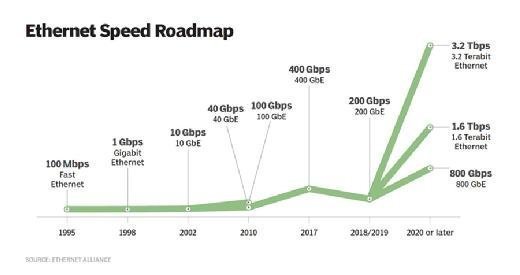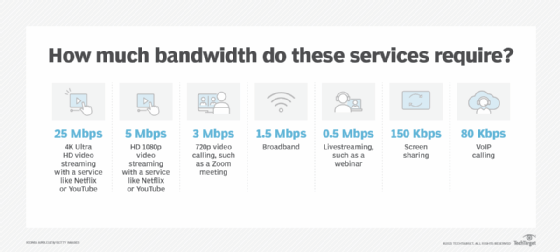How to Choose the Right Internet Plan Based on Megabits Per Second
Wiki Article
How Megabits Per Second Influence Your Online Tasks
The idea of megabits per second (Mbps) plays an essential role in shaping our on-line experiences. Higher Mbps can boost performance and reduce interruptions, while inadequate rates might foster frustration and ineffectiveness.Understanding Megabits Per Second
When thinking about web rate, it's vital to recognize the concept of megabits per second (Mbps), which acts as a common dimension for information transfer rates. This metric measures just how much information can be transferred over an internet link in one second, offering a clear understanding of efficiency capacities - Megabits Per Second. For context, one megabit amounts to one million bits, and Mbps is typically made use of to reveal transmission capacity for numerous on-line tasksA greater Mbps shows a much faster internet connection, making it possible for users to execute jobs such as downloading data, surfing internet sites, and participating in on the internet video gaming more efficiently. For example, typical surfing needs around 1-5 Mbps, while streaming high-definition video clip may demand 5-25 Mbps. Understanding these needs is important for determining the ideal net rate needed for details tasks.
Additionally, the number of devices linked to a network can affect general performance. Numerous customers streaming, gaming, or downloading and install simultaneously can strain offered transmission capacity, resulting in slower rates - Megabits Per Second. Reviewing individual online routines and needs is essential in picking a net plan that aligns with one's requirements, guaranteeing a seamless electronic experience
Streaming and Buffering Issues
Streaming high-definition content has actually come to be a staple of modern-day online home entertainment, yet it is commonly come with by discouraging buffering issues. These disruptions can substantially detract from the viewing experience, bring about dissatisfaction and potential loss of target market engagement. Buffering takes place when the information sent from the streaming service is not obtained swiftly enough to preserve a smooth playback, often as a result of not enough internet speed gauged in megabits per second (Mbps)
Additionally, real-time streaming can be affected by network blockage, which takes place when multiple devices share the very same data transfer. Maximizing connection speed and making sure adequate Mbps is essential for a smooth streaming experience. As streaming solutions proceed to evolve, understanding the impact of Mbps on buffering concerns remains essential for consumers looking for uninterrupted amusement.
Online Pc Gaming Efficiency
The impact of web rate on on-line activities extends past streaming, dramatically influencing on the internet pc gaming efficiency. In affordable pc gaming, reduced latency and high data transfer are critical for a seamless experience. A fast link lessens lag, allowing players to respond quickly to in-game events, which can be the difference in between success and defeat.Transmission capacity, gauged great post to read in megabits per second (Mbps), plays a vital function in sustaining numerous devices and pc gaming platforms at the same time. Not enough data transfer can lead to dropped connections or minimized video game high quality, negatively affecting gameplay. For example, online multiplayer games need considerable data transfer, especially throughout peak video gaming hours when numerous gamers are online.
Additionally, the type of video game can additionally dictate the necessary net rate. Fast-paced first-person shooters demand higher speeds to preserve responsiveness, while turn-based approach games might function reasonably well on lower speeds. As online video gaming remains to advance, with increasing graphical integrity and even more complicated multiplayer atmospheres, the need for greater Mbps will just increase. Players must ensure they have sufficient net speed to enhance their pc gaming efficiency and general experience. Buying a durable internet link is vital for gamers aiming to maximize their performance and satisfaction.
Video Clip Conferencing High Quality
In today's electronic landscape, video clip conferencing quality is greatly affected by internet rate, specifically in regards to bandwidth and latency. Top quality video clip calls require sufficient data transfer to transmit audio and video clip data flawlessly. Usually, a minimum of 1.5 Mbps upload and download speeds is recommended for common interpretation video, while high-definition video clip content conferencing normally demands a minimum of 3 Mbps.Latency, or the hold-up between sending out and getting data, likewise plays a critical function in the user experience. Low latency makes sure that conversations flow normally without uncomfortable stops or disturbances. Preferably, latency ought to be below 150 nanoseconds for efficient interaction. Greater latency can bring about echo, lag, and disjointed communications, which can hinder partnership and engagement throughout conferences.
Moreover, multiple individuals in a video clip meeting can strain readily available transmission capacity, necessitating even higher speeds. Network congestion, frequently created by simultaneous activities like streaming or downloading, can additionally deteriorate video quality. Thus, for organizations counting on video clip conferencing for remote collaboration, comprehending the connection between megabits per total and second communication high quality is crucial for preserving performance and improving online communications.
Choosing the Right Net Plan
Choosing a proper net plan is critical for making sure optimal performance in various on-line tasks, especially in settings that require high transmission capacity, such as video clip conferencing and online pc gaming. Megabits Per Second. When taking into consideration a web plan, it is vital to examine both the speed and data allowance to match your particular use needsFor homes with several users participating in simultaneous activities, a plan using greater megabits per second (Mbps) is suggested. Usually, a minimum of 25 Mbps is appropriate for standard streaming and surfing, while strategies surpassing 100 Mbps are more effective for even more intensive tasks. Additionally, think about the nature of your online tasks; video clip conferencing calls for a minimum of 1.5 Mbps upload speed, while on the internet gaming may need a lower latency but regular connection.
It is likewise vital to analyze your data cap. Unlimited information plans can stop throttling and disturbances, especially if hefty usage is expected. Lastly, research study provider in your area, as schedule and pricing can differ. By thoughtfully selecting an internet plan customized to your demands, you can enhance your on-line experience, ensuring smooth, uninterrupted accessibility to your recommended activities.
Final Thought
In final thought, the value of megabits per second (Mbps) in shaping online activities can not be overstated. A detailed understanding of private or house Mbps requirements is vital for picking an ideal internet plan that adequately sustains diverse online tasks and individual demands.

Usually, a minimum of 25 Mbps is suitable for basic streaming and surfing, while plans exceeding 100 Mbps are more suitable for even more intensive tasks. Additionally, take into consideration the nature of your online activities; video clip conferencing requires at the very least 1.5 Mbps submit rate, while on the internet video gaming may need a reduced latency but constant connection.
Report this wiki page